The self-cleaning mode on your oven is a handy tool to have. But how long does it take for the self-cleaning mode to clean your oven? Let's take a look below.
Depending on your oven, the self-cleaning mode can take anywhere from two to six hours to complete. During this time, the oven will reach very high temperatures, sometimes up to 900 degrees Fahrenheit. This process effectively removes built-up grease and food residue from the oven walls and floor.
Understanding your oven's self-cleaning cycle is important. In this article, we will discuss the process of using your oven self-cleaning mode, including how long it takes and what to expect. In addition, we will answer other frequently asked questions about ovens' self-cleaning cycle, so read on!
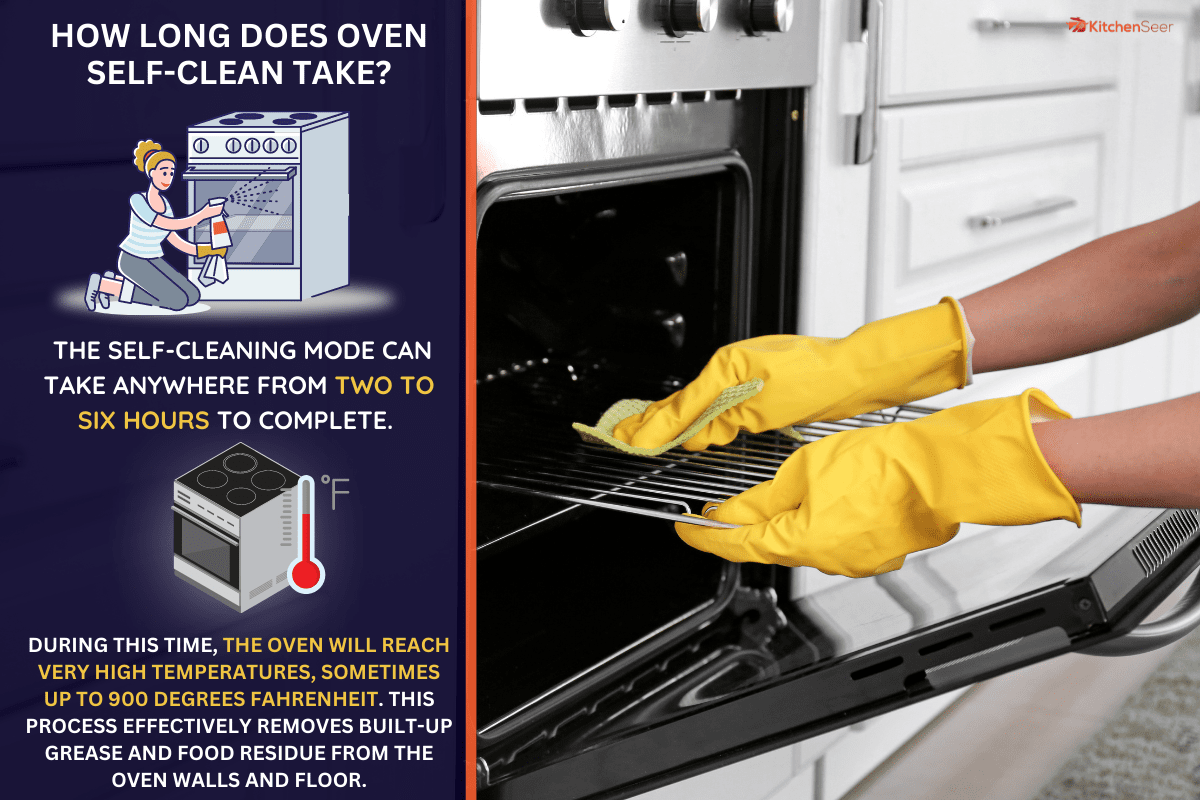
How Many Hours Does A Self-Cleaning Oven Take To Complete?
The self-cleaning cycle on an oven has a job to do, and that's to clean all the baked-on grease and grime from the oven walls and floor. This is a nice feature, so you don't have to do the job yourself with harsh chemicals or a lot of elbow grease.
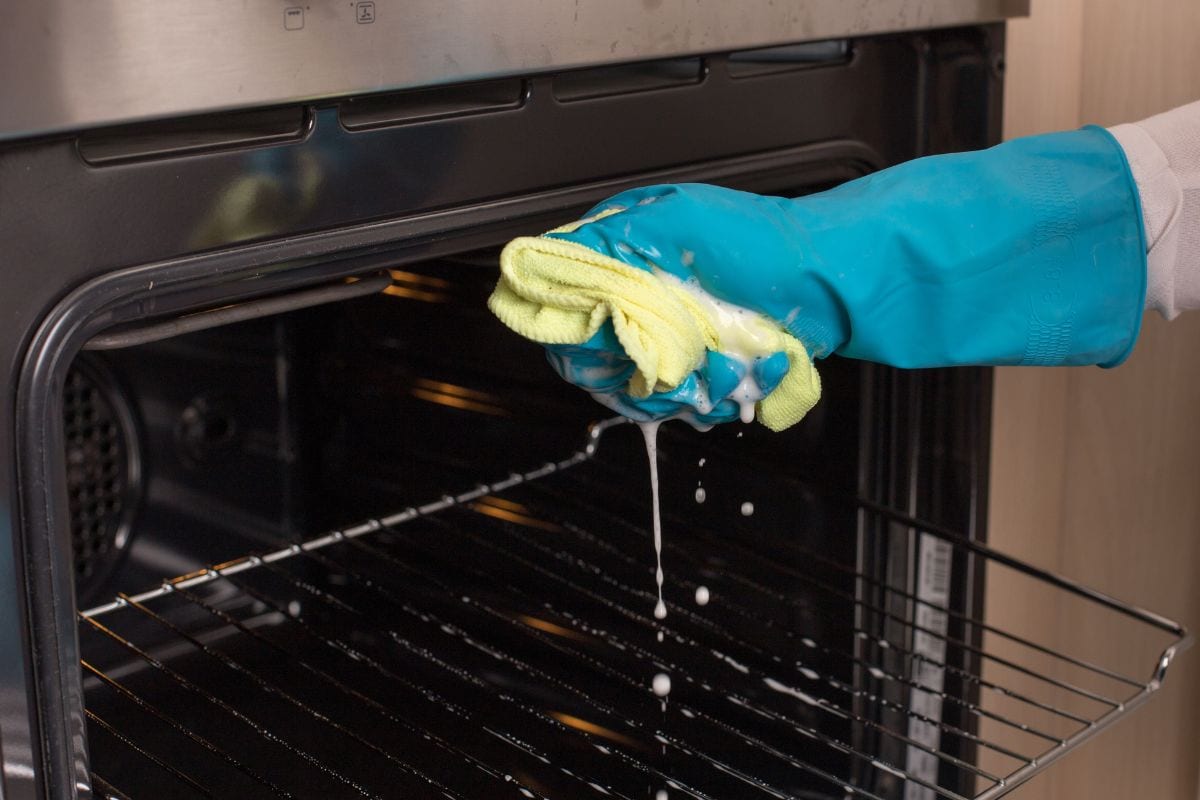
The self-cleaning feature on an oven will clean the entire oven, including the door, in one cycle. The average self-cleaning cycle takes two to six hours to complete depending on your oven model.
The time it takes for an oven to complete a cleaning cycle can also depend on the severity of the cleaning needed. For example, if your oven is only lightly soiled, the cycle may only take two or three hours. However, if your oven is filthy, the cycle could take up to six hours.
During the self-cleaning cycle, the oven will reach extremely high temperatures, sometimes up to 900 degrees Fahrenheit. This high heat is necessary to effectively remove all the grease and grime from the oven walls and floor.
As the oven reaches high temperatures, the grime and soil become ashes. These ashes should be wiped out with a cloth or sponge after the cycle is complete.
However, it's important to follow the tips below for a successful and safe cleaning cycle.

Tips For Using A Self-Cleaning Cycle On An Oven
There are some things you should know before using the self-cleaning cycle on your oven, and we've listed them below. Following these tips will help ensure a successful cleaning cycle and will also prevent any damage to your oven.
Plan Ahead
Since your oven will be out of commission for a few hours while the self-cleaning cycle is running, it's important to plan ahead and make sure you won't need to use your oven during that time.
For example, if you know you'll need to bake something for dinner, start the self-cleaning cycle early in the day so the oven will be available when you need it.
In addition, if you plan on using the oven for big meals or entertaining, make sure to do a deep clean beforehand so the oven is sparkling clean for your guests.
In this case, you may want to use the self-cleaning cycle the week or month before your event, giving yourself plenty of time to clean the oven by hand if needed.
Remove All Items From The Oven
Before starting the self-cleaning cycle, it's important to remove all items from the oven, including oven racks, pans, cookie sheets, and foil.
These items can damage easily at high temperatures and should be removed to prevent any damage. In addition, any food items or grease on these items can smoke and create odors while the cycle is running.
Hand wash any items that can't go in the dishwasher, and dry them completely before replacing them in the oven.
Use Ventilation
During the self-cleaning cycle, your oven will produce a lot of smoke and odors as it reaches high temperatures. For this reason, it's important to use ventilation in your kitchen, such as opening windows or turning on the exhaust fan.
In addition, if you have a range hood, make sure to turn it on to help remove any smoke and odors from the kitchen. Ceiling fans, in conjunction with the range hood, will also help to remove any smoke and odors quickly.
Check The Oven Seal
Before starting the self-cleaning cycle, checking the oven seal around the door is a good idea. This seal helps to prevent heat and smoke from escaping the oven during the cycle.
If the seal is damaged or loose, it can allow heat and smoke to escape, which can be a fire hazard. In addition, if heat escapes from the oven, it can damage countertops and cabinets near the oven.
To check the seal, make sure there is no gap between the door and the oven frame. In addition, you should feel resistance when you try to pull the door open.
Don't Use Cleaning Chemicals
Cleaning chemicals, such as oven cleaners, should never be used during the self-cleaning cycle. These chemicals can damage the oven and create hazardous fumes.
In addition, if there are any residues from these cleaning chemicals left in the oven, they can smoke and create odors during the self-cleaning cycle.
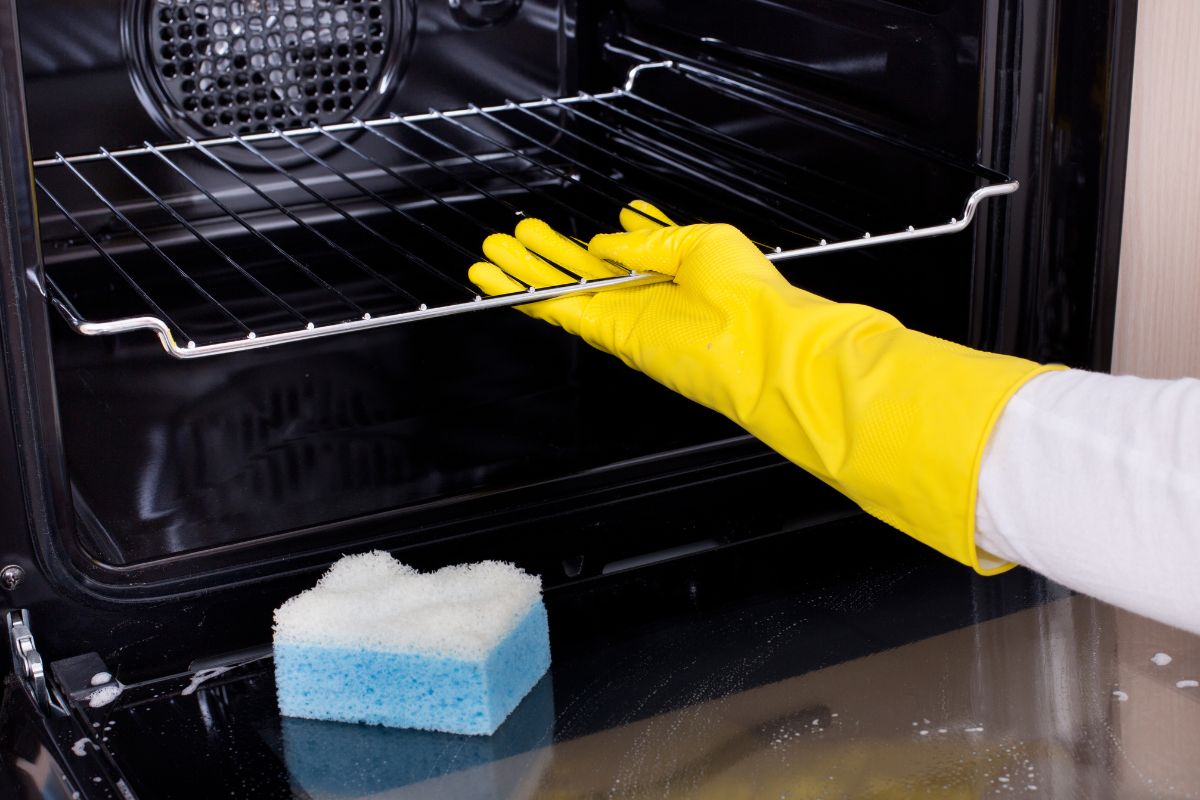
Remove Any Leftover Food
If there is any food or grease on the oven walls or floor, it can smoke and create odors while the self-cleaning cycle is running. For this reason, it's important to remove any food or grease before starting the cycle.
The easiest way to do this is to wipe down the oven with a damp cloth or sponge, removing as much food and grease as possible.
Be Careful Of The Oven Door
While the self-cleaning cycle is running, the oven door will be locked to prevent anyone from opening it. Ensure that the lock is engaged before starting the cycle, and do not try to force the door open during the cycle.
Forcing the door open can damage the oven door seal which can cause heat and smoke to escape from the oven. In addition, it can also cause the self-cleaning cycle to stop prematurely.
In addition, the front of the oven can get very hot during the cycle, so be careful not to touch it. Finally, if you have pets or kids, make sure they stay away from the oven while the cycle is running.
Follow The Instructions
Each oven is different, so it's important to follow the instructions in the owner's manual when running the self-cleaning cycle.
Most ovens have a keypad or control panel that you'll use to set the cycle time and temperature. Make sure to read the instructions carefully so you know how to operate your oven correctly.
Let The Oven Cool Down
After the self-cleaning cycle is complete, it's important to let the oven cool down before opening the door. Opening the door too soon can allow heat and smoke to escape, which can be a fire hazard. In addition, the oven interior will be sweltering, so it's important to use caution when opening the door.
Most ovens have a cooling fan that will turn on after the cycle is complete. This fan will help to cool down the oven quickly.
Remove Ashes And Debris
Once the oven has cooled down, you can remove any ashes or debris that have accumulated on the oven walls or floor. These ashes and debris are created during the self-cleaning cycle and can be removed with a damp cloth or sponge.
In addition, you can use a vacuum cleaner with a hose attachment to remove any ashes or debris that are difficult to reach.
Replace The Oven Racks
If you removed the oven racks before starting the self-cleaning cycle, make sure to dry them completely before replacing them in the oven.
If the racks are still wet, they can create steam when they come in contact with the hot oven walls, which can damage the racks.
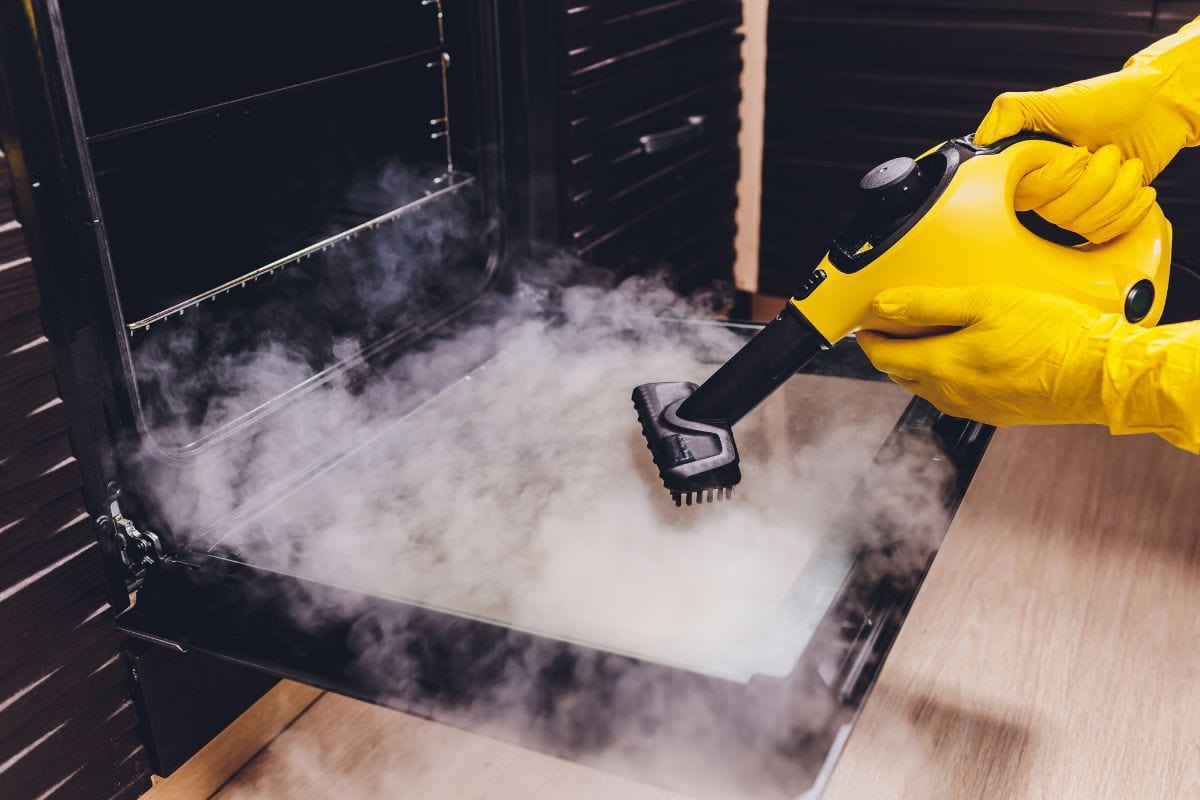
Can You Be In The House When The Self-Cleaning Cycle Is Running?
For the most part, you can remain in the house while the self-cleaning cycle is running. It is actually a good idea to stay in the house to monitor the cycle in case there are any problems.
As long as your home is properly ventilated during the process, you should be fine. Nonetheless, you should leave the house if the oven starts to smoke or if there is an excessive amount of heat coming from the oven. In severe cases, call the fire department to ensure that your home is safe.
Can I Stop A Self-Cleaning Oven Early?
Most ovens do have a cancel button that you can press to stop the cycle early. However, it is not recommended to do this unless absolutely necessary.
If you stop the cycle early, the oven will not be clean, and there will still be ashes and debris inside. Nonetheless, there are times when you may need to stop the cycle early, such as if there is a fire.
If you must stop the cycle early, make sure not to open the door until the oven has cooled down completely. In addition, if there is any flame, you don't want to put it out with water, as this can cause the oven to crack.
Instead, use a fire extinguisher to put out the fire.
Read More: Self Cleaning Oven Fire—Is This Okay?
Final Thoughts
The self-cleaning cycle on an oven is a great way to clean the oven without having to do any scrubbing. However, it's important to follow the instructions carefully and to take precautions to avoid any accidents.
If you have any concerns about running the cycle or if you experience any problems, be sure to contact a professional for help.
Made it to the end? Here are other articles you might enjoy:
How Long Does It Take To Preheat An Oven [& How To Know When It Is Preheated]?
Are Pans Oven-Safe? [Even With Silicone Handles]

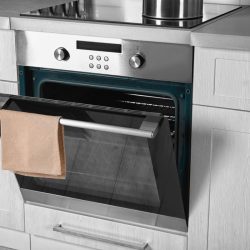
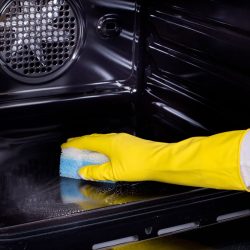
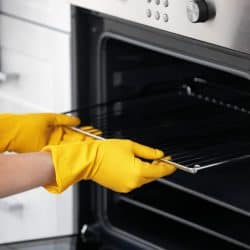
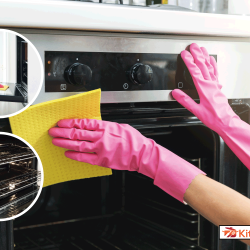
![Modern kitchen interior with a spice rack on the top and an oven with a cloth on the handle, How to Clean Oven Door Glass [5 EASY ways]](https://kitchenseer.com/wp-content/uploads/2020/11/A-modern-kitchen-interior-with-a-spice-rack-on-the-top-and-an-oven-with-a-cloth-on-it-250x250.jpg)
![Woman cleaning oven in kitchen - How to Clean Oven When Aqualift Doesn't Work [Step by Step Guide]](https://kitchenseer.com/wp-content/uploads/2023/08/Woman-cleaning-oven-in-kitchen-250x250.jpg)